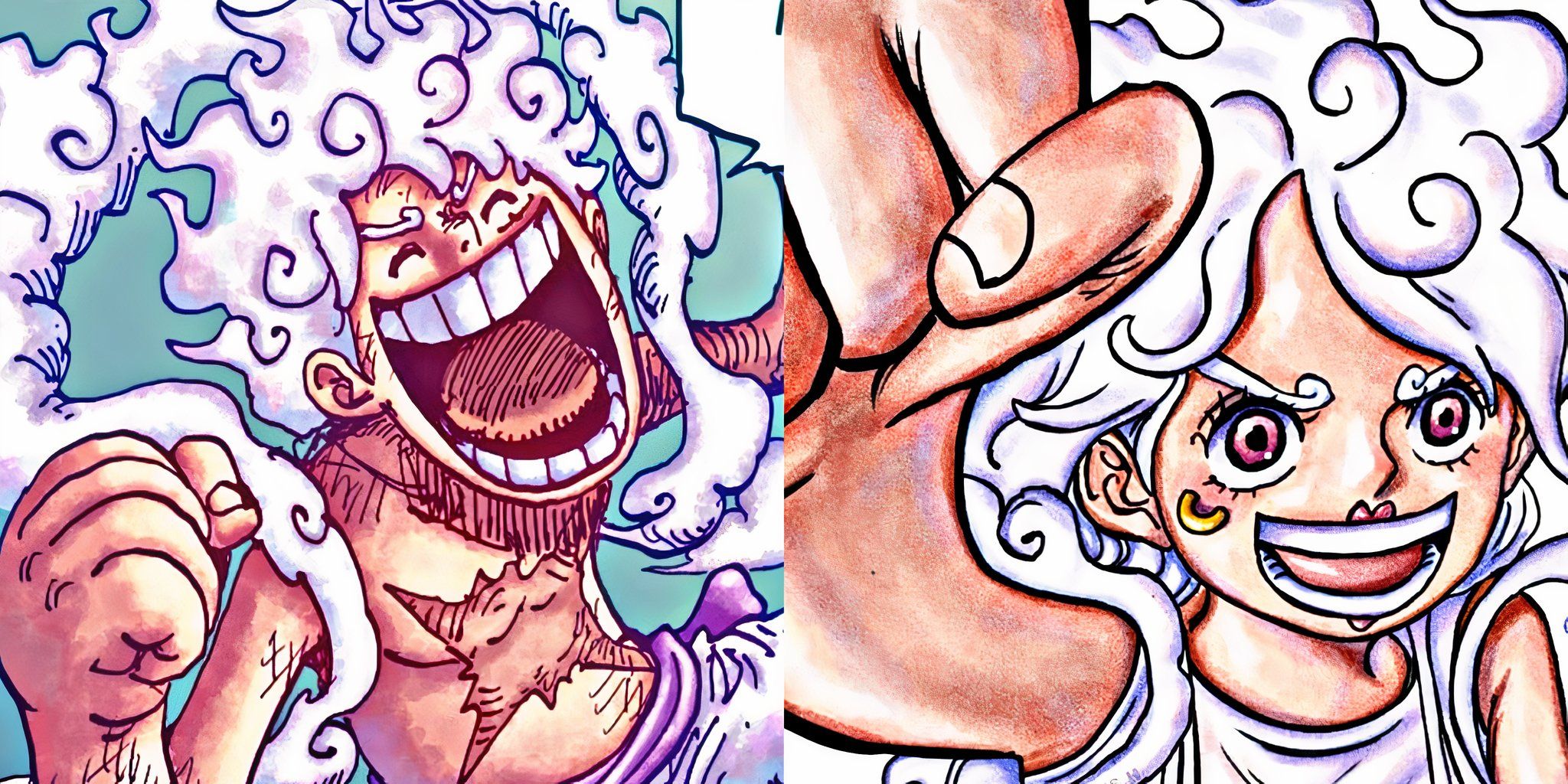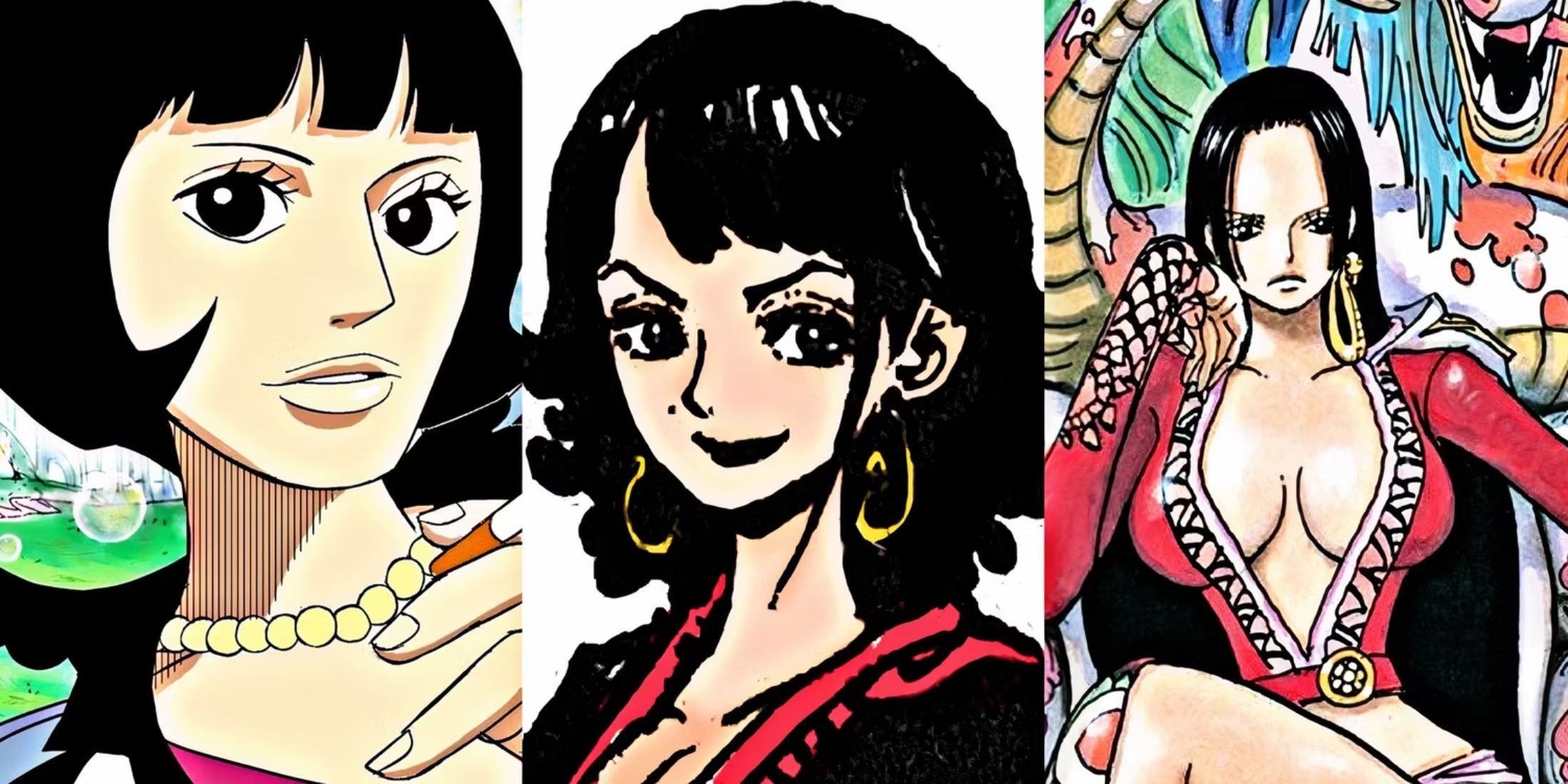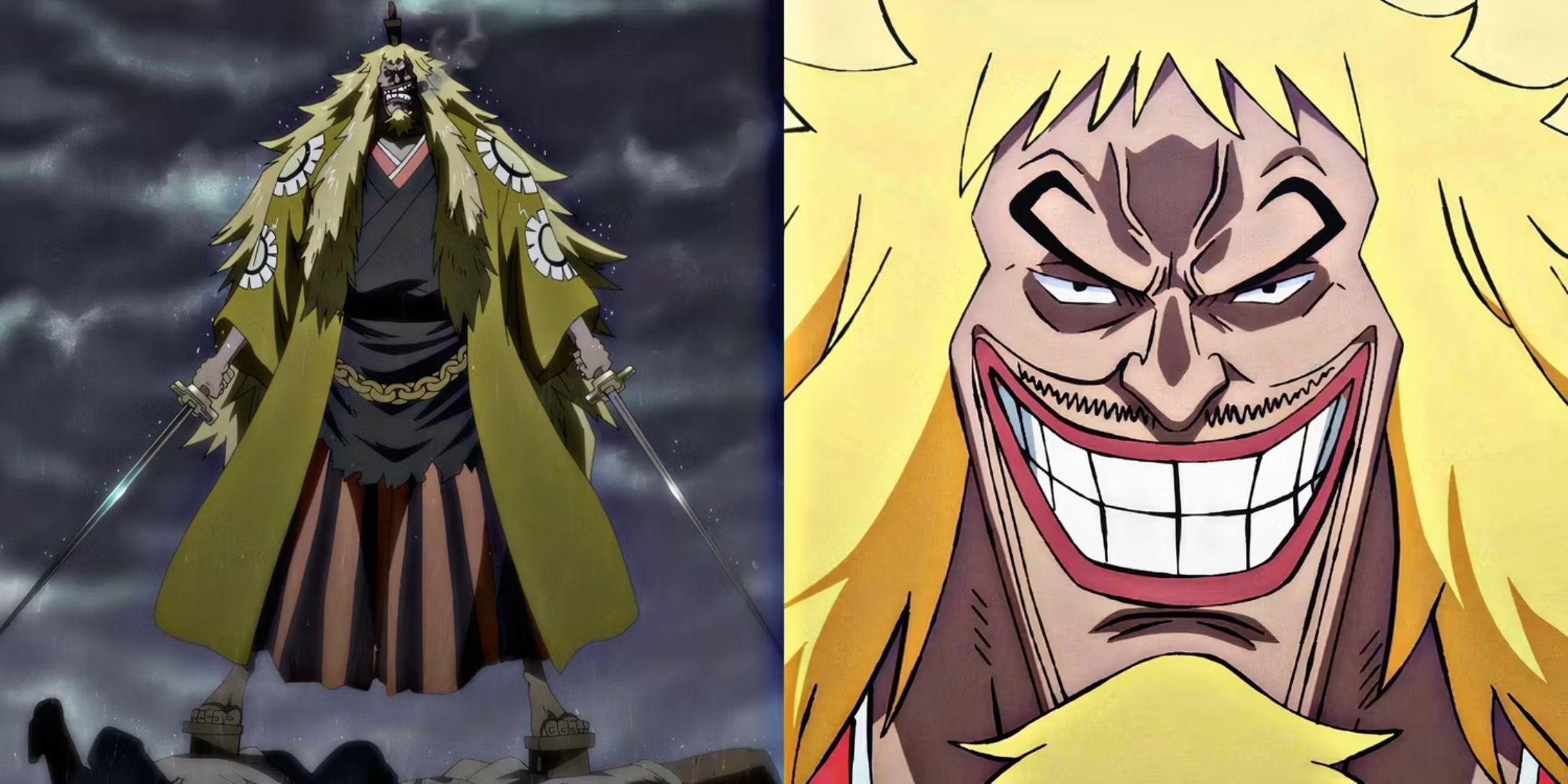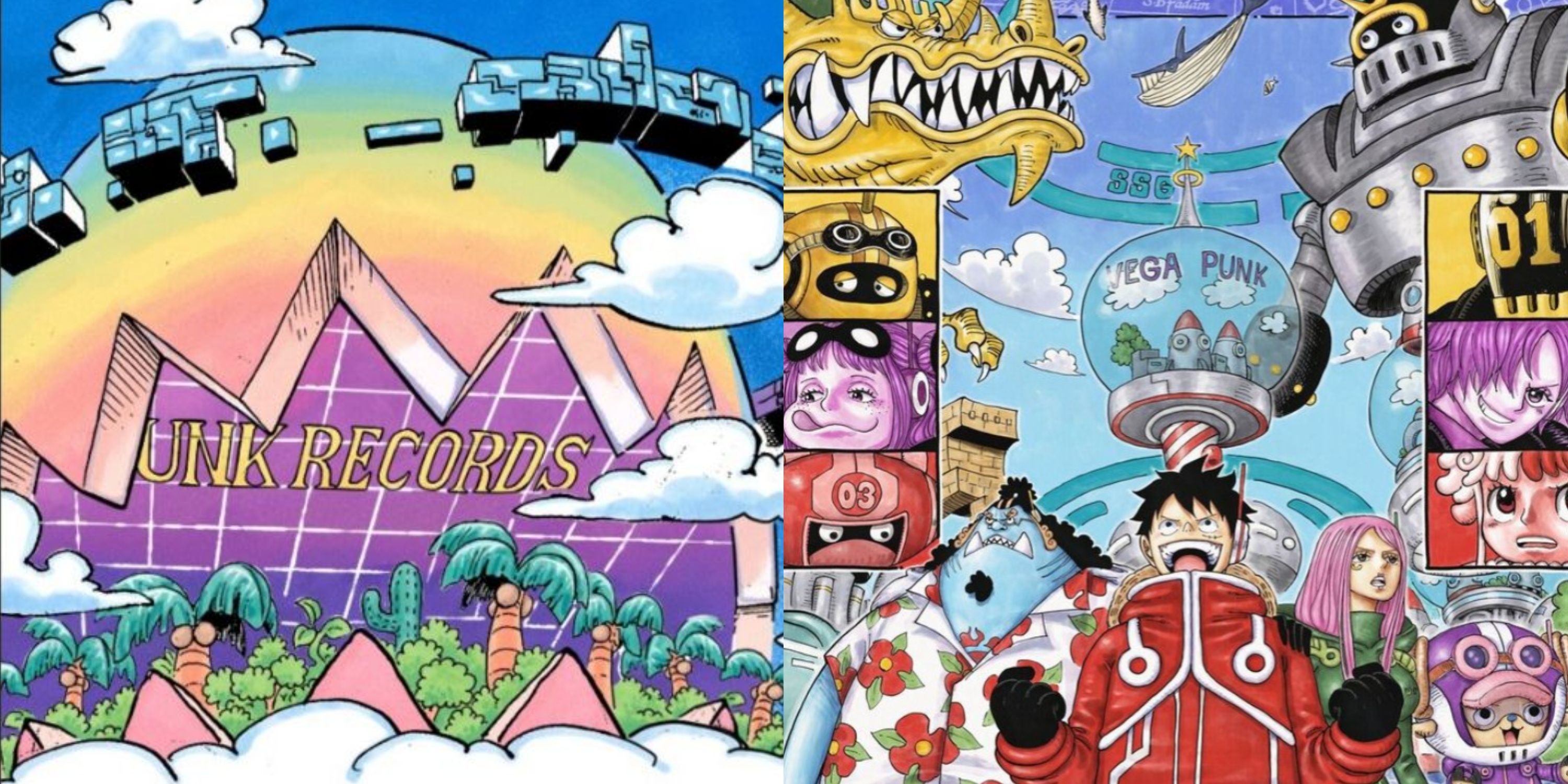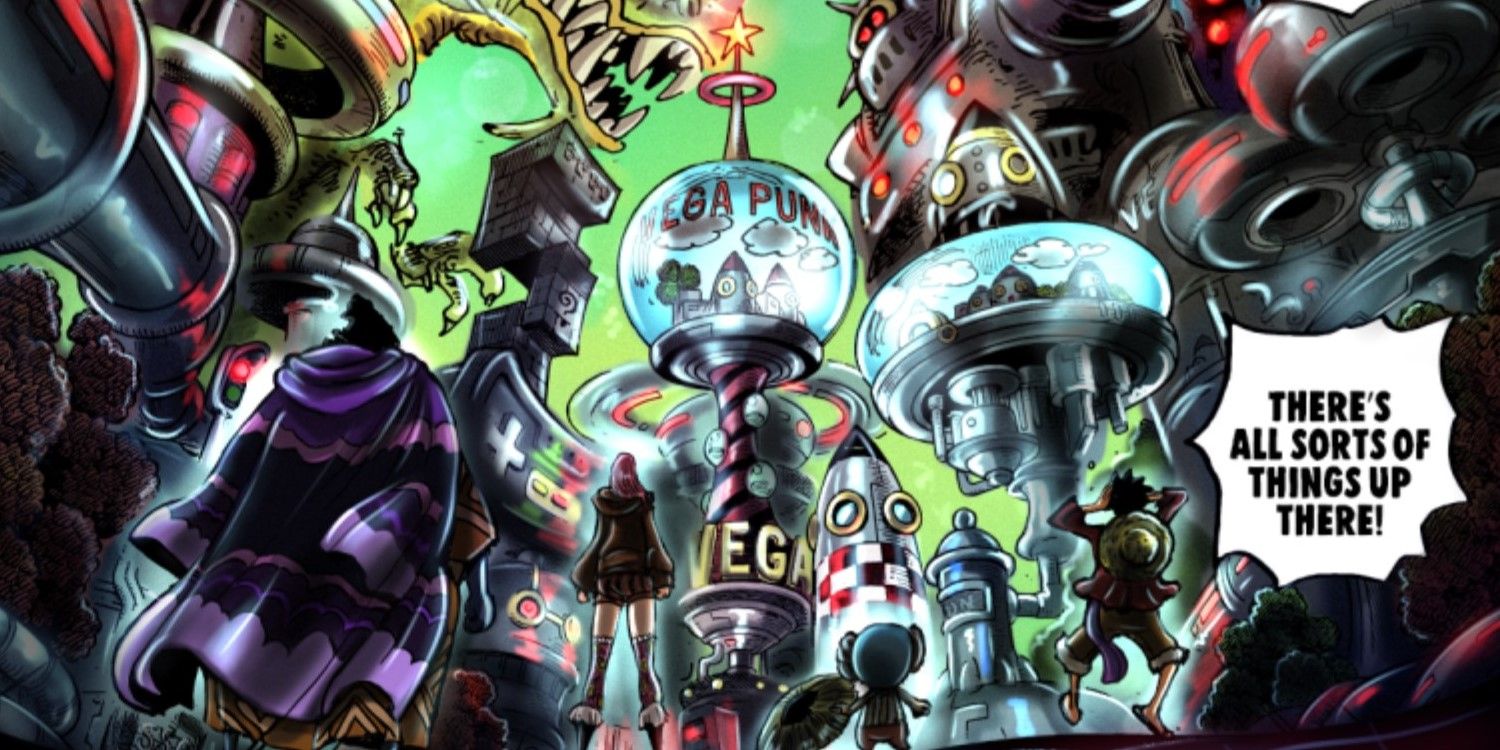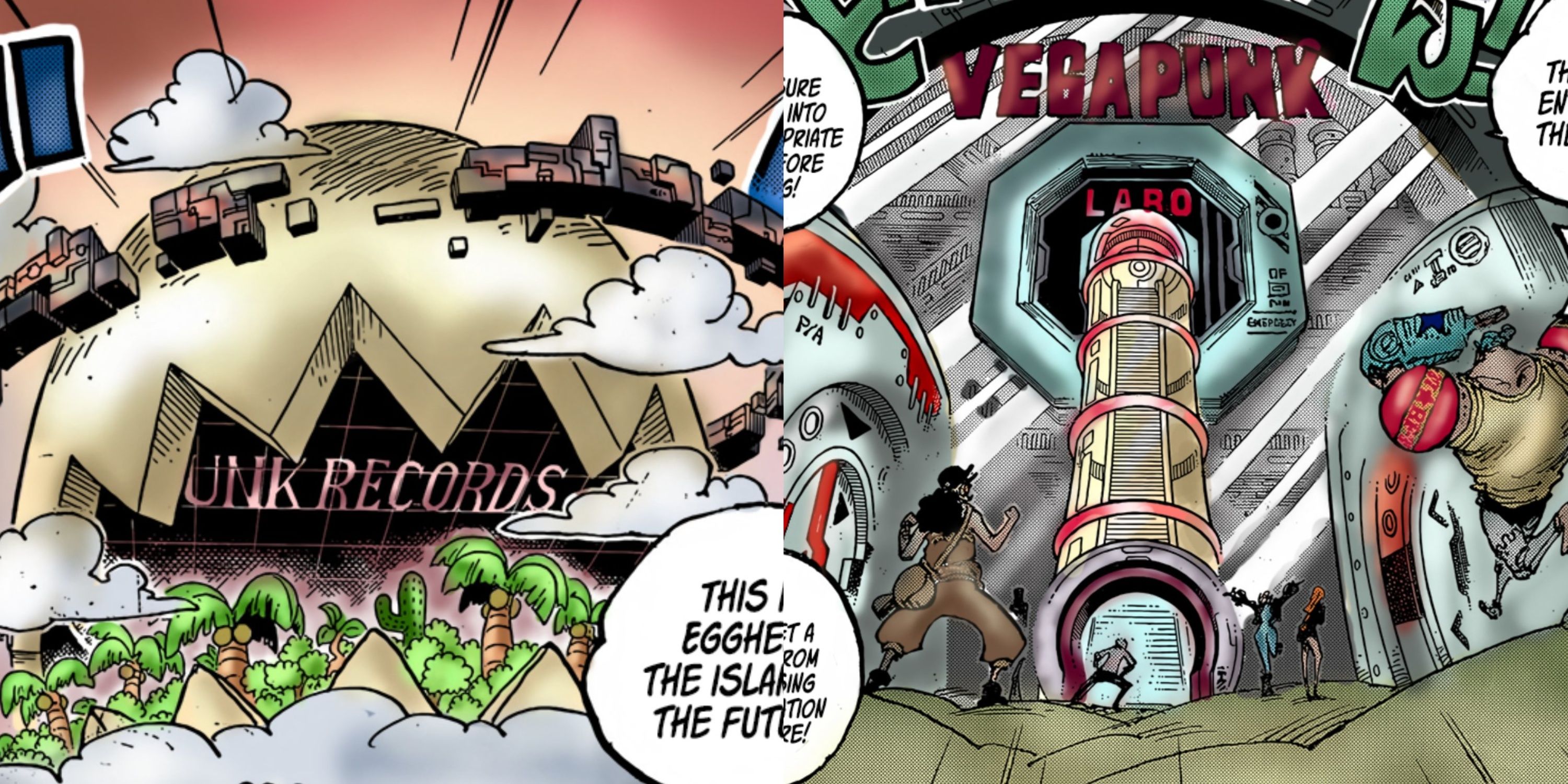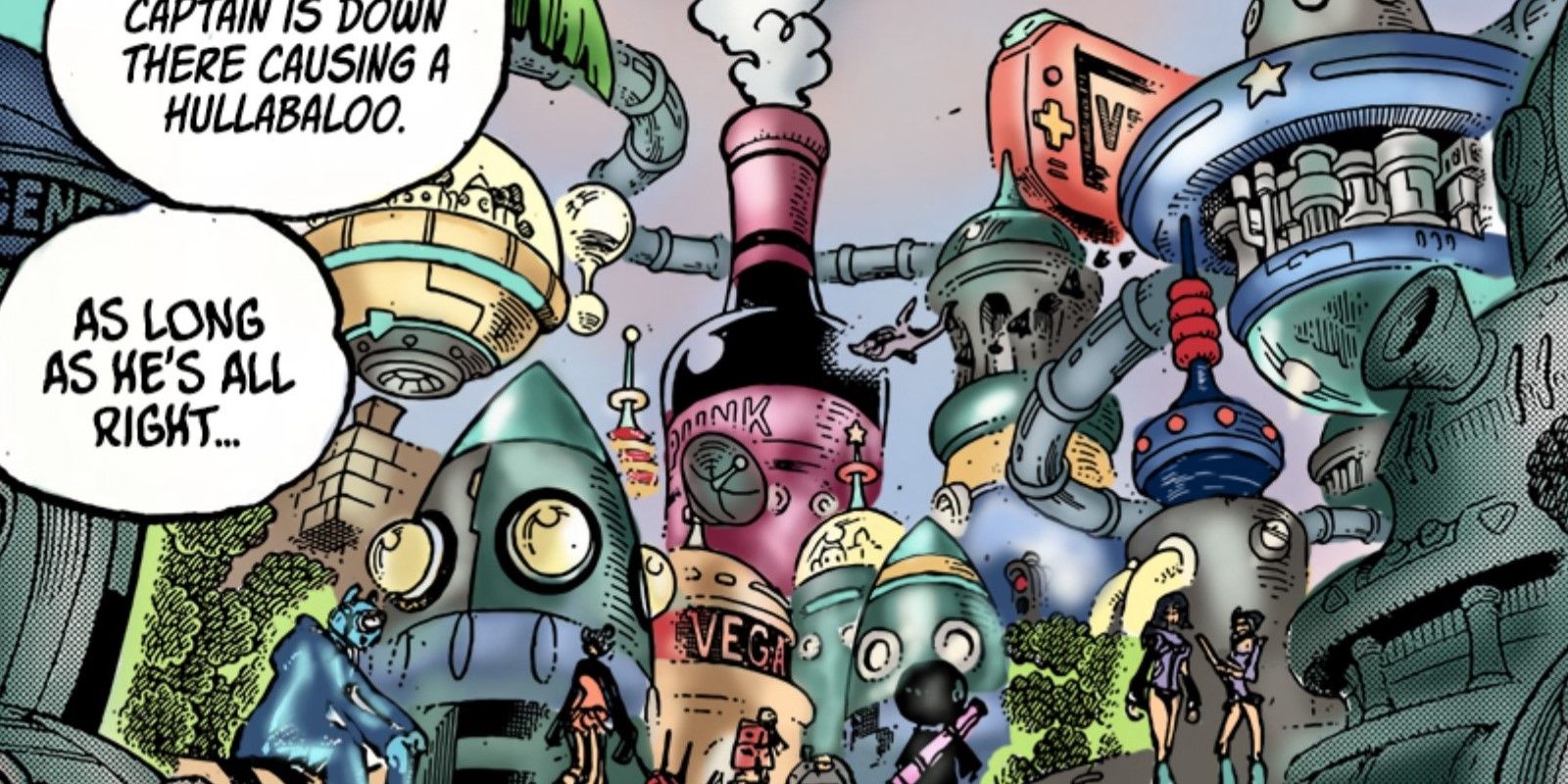Highlights
- The world of One Piece draws inspiration from real-world locations and architectural styles, creating a vibrant and diverse setting.
- Egghead Island, the setting for the Egghead Arc, is depicted as one of the most technologically advanced regions in the world of One Piece, with references to retrofuturistic design styles.
- The design and aesthetic features of Egghead Island, including its urban sphere, laboratories, and inventions, are heavily influenced by the Raygun Gothic and Space Age design sensibilities of the 1940s-1970s.
In a world as vibrant and diverse as that of Eiichiro Oda's One Piece, there are a multitude of references to real world locations, architectural styles, and aesthetic templates which make each setting feel more vivid and real. From Arabasta's reinterpretation of Egypt and Middle Eastern architecture, to Dressrosa channeling the design sensibilities of the Mediterranean, there are clear signs of how Oda was inspired to dream up the cultural atmosphere within these locations. Most recently, Wano Country bore many influences from Feudal Japan, with its samurai, daimyo system, and the general architectural flavor of its settlements.
Subsequently, the Egghead Arc — which takes place after Luffy's defeat of Kaido in Wano Country — sees the Straw Hat Pirates journey to the headquarters of the Marine SSG on Egghead Island, headed by the enigmatic Dr. Vegapunk. While the island itself is small, it has been depicted as one of the most technologically advanced regions in the world of One Piece, with many references to the Space Age, Raygun Gothic and other retrofuturistic design styles. In effect, there is an inherent optimism in Egghead's design, which shines through the arc, in spite of the tensions that are running high as the Straw Hats and Vegapunk deal with the World Government's invasion of the island.
The Levels Of Egghead's Structure
Dotted with trees along its periphery, Egghead was originally a winter island until Vegapunk tinkered with its climate with his A.C. technology to make it more of a tropical rainforest. That being said, there are still certain areas that display aspects of the region's original climate, with cold winds, icebergs, and warm eddies along the coast where the heat from the island's interior reacts with the cold waters that surround it. Although Egghead's actual footprint is quite small, it does seem to host a civilization on the scale of a city at its lowest level, the Fabiriophase.
This is where most of the island's workers reside in a futuristic urban sphere featuring glass domes, rocket shaped structures, and holograms of monster battles. Quite a few obvious references to retrofuturism and the Raygun Gothic aesthetic can be seen here, with spacecrafts, giant robots, and jetpacks serving as obvious nods to this era of design. The scale of these structures borders on the gargantuan, with the glass domes themselves containing multiple residential blocks, elevated above the ground atop large metal structures.
Moreover, the presence of reptilian monsters and robots, as well as the weaponized Sea Kings around the waters of the island are an homage to tokusatsu films such as Godzilla and Ultraman, which gained prominence during the post-World War II Showa Era of Japan. Another section of the Fabiriophase also serves as a scrapyard for Vegapunk's work. This is where the mysterious Iron Giant from the Void Century has been residing, gradually wasting away from centuries of inactivity. Above this section is a massive Island Cloud, much like the ones that support Skypiea found in the White-White Sea above Paradise in the Grand Line. This is where the island's next level, the Labophase is located.
The Island Of The Future
Atop the Island Cloud that was created by Vegapunk to support the Labophase, there is a giant cracked egg, which hosts the three interconnected blocks of the Labophase. Each of the three structures: named Building A, B, and C, contains three or more floors of laboratories dedicated to distinct dimensions of Vegapunk's research, ranging from Artificial Devil Fruits to artificial organs, synthetic minerals, and weapons.
The entirety of the Labophase is protected by the Frontier Dome — a field of lasers that defends the research facilities located there from intruders. This defense system consists of the two bands encircling the clouds, and only a user of the Pika Pika no Mi such as Admiral Kizaru can hope to bypass it due to their immunity to lasers. Depending on the level of the threat that Vegapunk has to contend with, the intensity of the defense system can be calibrated on a scale from 000 to 100, which is its maximum output.
Entry to the laboratory is by means of an escalator leading up to an octagonal metallic doorway which can shift between being tangible or intangible, contingent on whether someone or something is passing through it. At the very top of the Labophase is Punk Records, which contains the severed portion of Vegapunk's brain as well as the transmission equipment that allows him and his satellites to sync up with it on a daily basis.
Punk Records, essentially serves as a memory bank for the entire island, containing all the research data Vegapunk and his satellites have accrued in the years they have spent working on Egghead. When viewed from the outside, Punk Records occupies most of the space inside the egg that crowns the Labophase, featuring a black gridded surface with the words "PUNK RECORDS" emblazoned on it. Another ring of floating blocks encircles this zone outside the egg dome, completing its enclosure. So far, little has been shown of its internal structure and composition.
A Raygun Gothic Paradise
Besides the structure and aesthetic features of the city of the Fabiriophase and the laboratories of the Labophase, Vegapunk's inventions and his own satellites display many references to Raygun Gothic. There is no shortage of retrofuturist design elements at every scale from the hoverboots and the Straw Hats' outfits, to the appearance of Atlas, one of Vegapunk's satellites. Many of them bear subtle nods to Astro Boy, one of the most prominent manga and anime franchises in history, and a cultural icon of the Showa Era.
Additionally, the concept of Vegapunk having six satellites working under him to support his work as a genius scientist is very closely tied to the premise of Cyborg 009, another well-known manga series from the post-war Showa Era. In effect, many of the visions of the future, as seen on Egghead Island, bear resemblance to the futurist-leaning design sensibilities of the Space Age, based on popular science fiction from the 1940s-1970s, as well as the architectural sensibilities of the time.
The World Expo of 1970 in Osaka also seems to have a trickle down influence on Egghead. Flying saucer shaped structures, space frames, and domes are a hallmark of most retrofuturist traditions, which were most prominently displayed in Japan at the time of the Expo. Retrofuturism here denotes the optimism of its era, where design aimed to create utopias that looked ahead and dreamed up images of what life could be like, much like the relative prosperity of the Showa Era in the decades after World War II. For better or for worse, this is a welcome departure from the grim conditions in Wano Country, and in time, perhaps the conclusion of the Egghead Arc will show whether this optimism is warranted at this juncture in One Piece's story, or just a device to induce complacency before the real challenge presents itself.
One Piece is available to stream on Crunchyroll.

